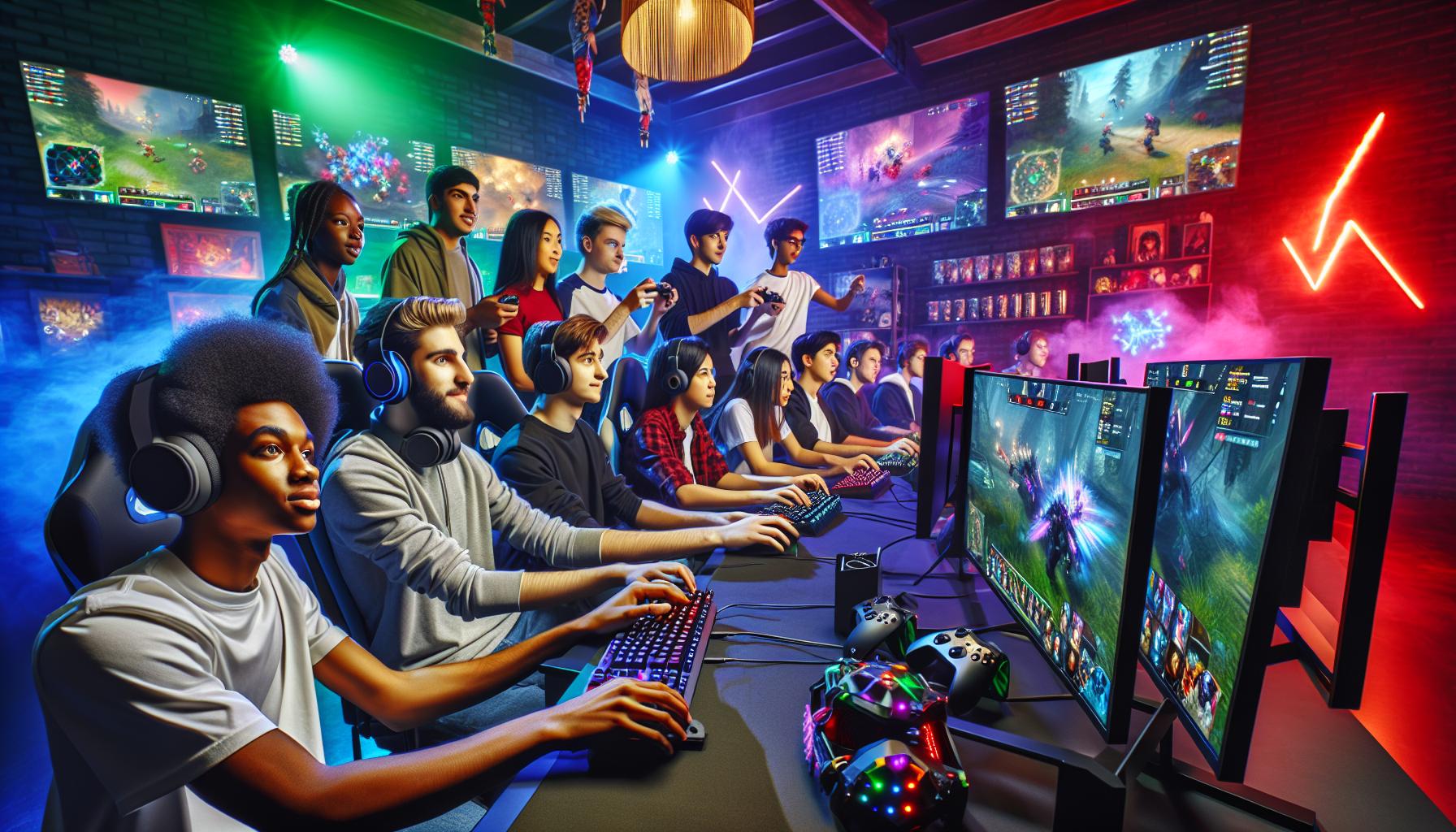”
Key Takeaways
- Definition and Purpose: Travel and lifestyle blogs combine personal experiences, tips, and stunning visuals to inspire adventure and enrich readers’ lives through exploration.
- Engaging Storytelling: Captivating narratives that include personal anecdotes and vivid descriptions foster relatability and connection with the audience.
- Practical Tips: These blogs offer practical advice such as packing lists, itineraries, and destination guides, helping readers plan their own trips with confidence.
- Community Building: Travel blogs create a sense of belonging by encouraging interaction among readers through comments and social media, enhancing the travel experience.
- Stunning Visuals: High-quality photographs and visual content play a vital role in engaging readers and enhancing the overall storytelling experience.
- Monetization Opportunities: Bloggers can monetize their platforms through affiliate marketing, sponsored content, digital products, freelance services, and membership models while maintaining authenticity.
In a world brimming with breathtaking destinations and vibrant cultures, travel and lifestyle blogs have emerged as essential guides for wanderlust-filled souls. These platforms not only showcase stunning visuals but also share personal experiences, tips, and insights that inspire readers to embark on their own adventures. With storytelling at their core, these blogs create a sense of connection and community among fellow travelers.
As people seek to enrich their lives through exploration, travel and lifestyle blogs serve as invaluable resources. They offer a unique blend of practical advice and inspirational narratives that cater to diverse interests. Whether it’s discovering hidden gems in far-off lands or exploring local treasures, these blogs empower individuals to embrace a lifestyle filled with adventure and discovery.
Travel and Lifestyle Blog
A travel and lifestyle blog focuses on sharing experiences related to travel, culture, and everyday life. These blogs feature engaging narratives, practical tips, and stunning imagery, appealing to readers who crave both adventure and insight.
- Travel Experiences: Bloggers document journeys to diverse destinations, sharing stories that inspire exploration. Personal anecdotes offer readers relatable perspectives on travel adventures.
- Lifestyle Insights: These blogs intertwine lifestyle elements, such as art, food, and wellness, highlighting how travel influences daily life. They often feature local cuisines, cultural practices, and lifestyle trends that reflect global diversity.
- Tips and Advice: Travel and lifestyle blogs provide practical information, including packing lists, itineraries, and budget-friendly travel suggestions. Readers gain valuable tools for planning their own adventures.
- Community Engagement: These platforms foster connections among like-minded individuals. Readers often share their experiences in comments or social media, creating a sense of belonging within the travel community.
- Visual Storytelling: Stunning photographs accompany narratives, enhancing the allure of destinations and experiences. Visuals engage readers and draw them into the blogger’s journey.
Travel and lifestyle blogs serve as essential resources for anyone looking to enrich their lives through travel and diverse experiences.
Key Features of Travel and Lifestyle Blogs
Travel and lifestyle blogs showcase unique aspects of exploration and daily living. These platforms primarily focus on engaging storytelling and stunning visuals to connect with readers.
Engaging Storytelling
Engaging storytelling captivates readers by combining compelling narratives with personal experiences. Bloggers often share anecdotes that reflect their adventures, enhancing relatability. They use vivid descriptions to paint a picture of each destination, transporting readers to different cultures and environments. Strategies such as incorporating local insights and reflections on personal growth during travels add depth. Emphasizing authenticity, bloggers encourage readers to envision their own adventures and draw inspiration from real-life experiences.
Stunning Visuals
Stunning visuals play a crucial role in travel and lifestyle blogs, capturing readers’ attention instantly. High-quality photos showcase breathtaking landscapes, vibrant cityscapes, and intimate cultural moments. Bloggers often use visually appealing layouts, combining images with minimal text for an immersive experience. Visual storytelling not only enhances the narrative but also evokes emotions, making readers feel connected to the journey. Additionally, infographics and video content can provide a dynamic perspective on travel and lifestyle, further enriching the reader’s experience.
Popular Travel and Lifestyle Blog Topics
Travel and lifestyle blogs cover a wide range of engaging topics that attract diverse audiences. These subject areas provide valuable insights and practical advice to enhance readers’ experiences.
Destination Guides
Destination guides serve as comprehensive resources for travelers. They offer detailed information about specific locations, including must-see attractions, local customs, and hidden gems. Bloggers often include essential tips like transportation options, nearby accommodations, and the best times to visit. For instance, a guide to Paris might cover iconic landmarks, local dining spots, and cultural festivals. Such thorough guidance helps travelers navigate new places with confidence and enhances their overall experience.
Personal Experiences
Personal experiences resonate deeply with readers seeking authentic travel narratives. Bloggers share their stories, detailing unique adventures, challenges, and memorable encounters. These relatable anecdotes provide insights into the realities of travel, inspiring others to embark on their journeys. For example, a post might recount a solo trip through Southeast Asia, highlighting moments of discovery and personal growth. Sharing these personal narratives fosters connection between bloggers and their audience, encouraging a sense of community among fellow explorers.
How to Start Your Own Travel and Lifestyle Blog
Starting a travel and lifestyle blog involves several key steps that lay the foundation for captivating storytelling and audience engagement. Below are essential elements to consider when embarking on this journey.
Choosing a Niche
Choosing a niche defines the blog’s focus and audience. Popular niches include adventure travel, luxury lifestyle, budget travel, culinary exploration, and wellness retreats. Each niche offers unique opportunities for content creation and audience engagement. For example, focusing on adventure travel allows for exciting stories about hiking, climbing, and outdoor experiences, while luxury lifestyle will emphasize high-end accommodations and gourmet dining. Identifying a specific niche enhances blog appeal and connects the writer with a targeted community.
Creating Compelling Content
Creating compelling content captivates readers and fosters connections. Taking time to craft engaging narratives is essential. Bloggers should incorporate personal experiences and vivid descriptions to make stories relatable. Quality visuals, such as high-resolution photos and videos, elevate the storytelling by transporting readers to the destinations. Additionally, providing useful tips, such as packing lists and travel recommendations, enriches the content further. Consistency in posting and a distinct voice build trust and encourage reader loyalty over time.
Monetizing Your Travel and Lifestyle Blog
Monetization strategies for travel and lifestyle blogs vary, offering multiple avenues for generating income. Bloggers can adopt the following approaches:
- Affiliate Marketing
Affiliate marketing involves promoting products or services using unique referral links. When readers purchase through these links, bloggers earn a commission. It’s essential for bloggers to select relevant brands that align with their niche for effectiveness.
- Sponsored Content
Sponsored content includes posts created in collaboration with brands. Companies pay bloggers to write about their products, services, or experiences. Authenticity enhances engagement, so choosing sponsorships that resonate with the blog’s audience is crucial.
- Advertising
Ad placement on websites can generate revenue through programs like Google AdSense. As traffic increases, so do potential earnings from display advertisements. Strategic placement boosts visibility without overwhelming readers.
- Selling Digital Products
Bloggers can create and sell digital products, such as eBooks, travel guides, or photography presets. This approach leverages expertise while providing valuable resources to readers, establishing authority in the niche.
- Offering Services
Freelancing as a travel consultant, photographer, or social media manager can supplement income. Bloggers can create service packages tailored to their audience’s needs, facilitating direct interaction and enhancing community bonds.
- Membership or Subscription Models
Introducing membership tiers with exclusive content provides a steady income stream. Subscriptions may offer premium articles, webinars, or personalized travel planning, catering to dedicated followers.
- Merchandising
Selling branded merchandise can generate additional revenue. Products like apparel, travel gear, or accessories can embody the blog’s identity, allowing fans to showcase their support.
Implementing a combination of these strategies can optimize income potential while maintaining integrity and authenticity. Successful monetization reflects a deep understanding of the audience, aligning offers with readers’ interests and needs.
Explore The World
Travel and lifestyle blogs serve as invaluable resources for those eager to explore the world. They not only inspire adventure but also create a sense of community among like-minded individuals. By sharing personal experiences and stunning visuals bloggers engage their audience and foster connections that transcend geographical boundaries.
These platforms empower readers with practical tips and relatable narratives that make travel more accessible. As bloggers continue to innovate and share their journeys they’ll undoubtedly inspire others to embark on their own adventures. Whether through captivating storytelling or insightful advice the impact of travel and lifestyle blogs will continue to resonate with explorers everywhere.
“




